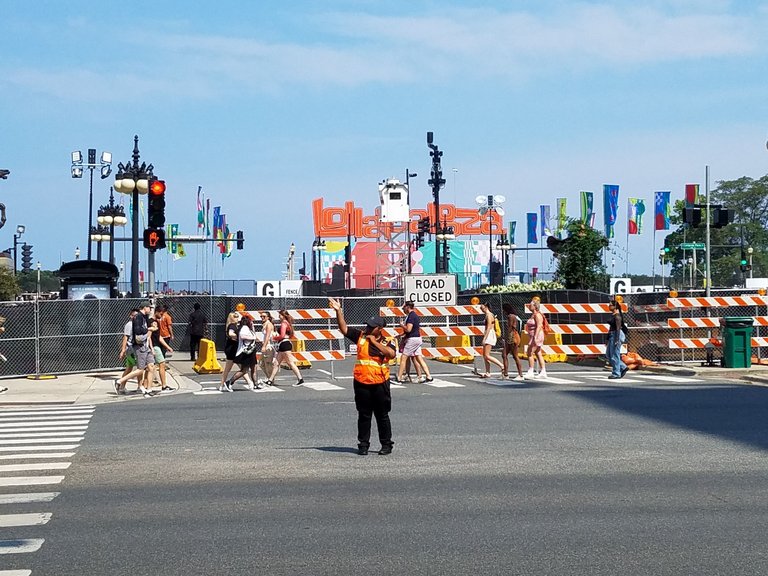Nice of you to stop by!
I traveled to Chicago, Illinois during the Summer of 2024 and during my time there I visited many popular tourist attractions and museums. Many of these I had also seen during past trips to Chicago.
This series of eight posts will focus on downtown Chicago sights such as:
B1: Chicago Overview, CityPASS, & Millennium Park (this post)
B2: Field Museum of Natural History
B3: Shedd Aquarium
B4: Museum of Science and Industry
B5: Art Institute of Chicago (Part 1)
B6: Art Institute of Chicago (Part 2)
B7: Willis/Sears Tower Skydeck, the Rookery, Chicago Fed Money Museum, Museum of Contemporary Photography, Chicago Cultural Center, & Design Museum of Chicago
B8: Medieval Torture Museum (NSFW)
I think I will separate out several Chicago suburb locations like Six Flags Great America (Gurnee) and the Morton Arboretum (Lisle) into a separate series of posts.
This article will focus on transportation options in Chicago, what is included in the Chicago CityPASS, and my visit to Millennium Park.
TRANSPORTATION
Airports:
Chicago has two major airports - Chicago O'Hare International Airport (ORD) and Chicago Midway International Airport (MDW). O'Hare tends to offer more flight options - it has more international flights and is a hub for United, American, Frontier, and Spirit. Midway is closer to the city and offers better flight options for Southwest.
From O'Hare you can take a Chicago Transit Authority (CTA) Blue Line train to downtown Chicago for $5.
From Midway you can take a CTA Orange Line train to downtown Chicago for $5.
City Parking:
If you drive to Chicago and/or rent a car, please keep in mind that most city parking has a fee. There are very few areas where you can park for free and if you do think you have found one, you should doublecheck the restrictions to make sure you don't get towed or receive an expensive parking ticket.
Here is a Chicago Park District map of Grant Park, which shows parking areas near the Art Institute, Field Museum, Shedd Aquarium, and Adler Planetarium:
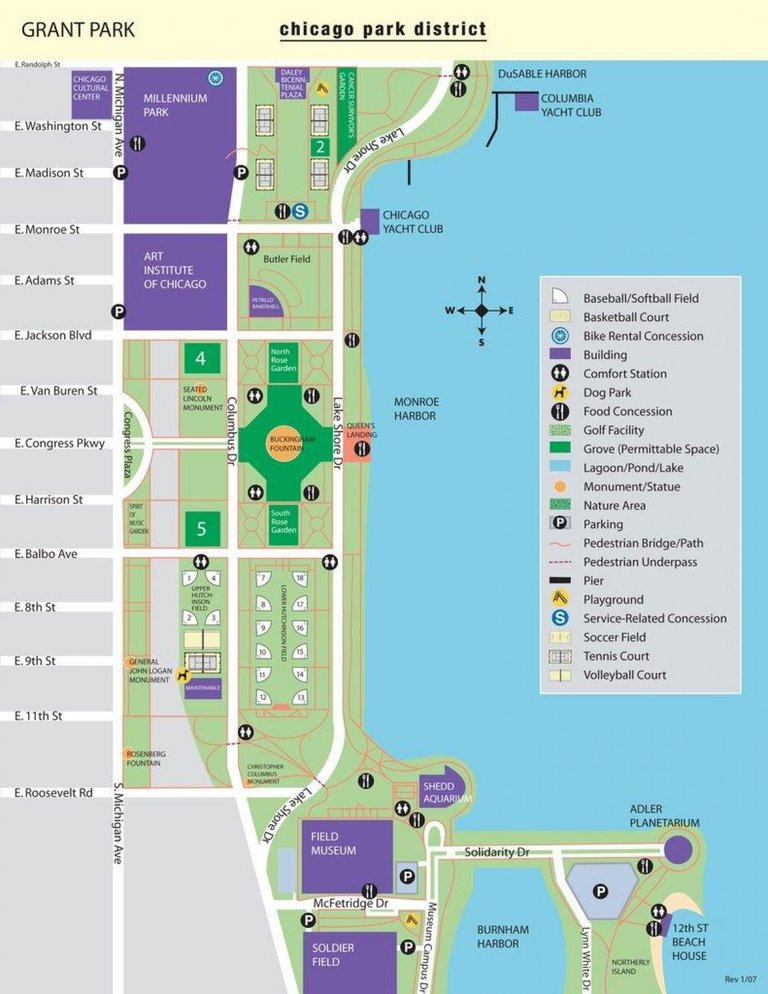
To give you a broad overview of typical parking costs in 2024, for parking near the Shedd Aquarium, Field Museum, and Adler Planetarium:
https://www.sheddaquarium.org/plan-a-visit/directions-and-parking
https://www.fieldmuseum.org/visit/directions-parking
Soldier Field North Garage
$25 for up to 4 hours, $30 for up to 12 hours, $50 for up to 24 hours
East Museum Lot
$30 for up to 12 hours
Adler lot
Early bird, before 9:30 a.m., $12
Daily, $25
Night rate, after 4:30 p.m., $15
TRAVEL TIP: If you use SpotHero or similar parking apps, you can find parking spots along Michigan or State Street for $10 - $20 (some even in the $6 - $8 range), though you'll need to walk several blocks east.
If your destination is the Art Institute or Millennium or Grant Park, there are 4 different garages in the direct vicinity. The rates differ slightly between them by a few dollars but are relatively similar.
The drive-up rate (showing up at the parking garage) is on the expensive side:
https://millenniumgarages.com/drive-up-rates/
Grant Park North
Weekday Rates
0 to 1 hour $32.00
1 to 3 hours $34.00
3 to 12 hours $40.00
12 to 24 hours $54.00
Early Bird Rate $17.00
In by 5am-10am / Out by 7pm
5 Hour Minimum Stay / Mon – Fri (No Holidays)
Weekend rates are comparable ($34 - $54)
Grant Park South varies from $30 - $50
Millennium Park varies from $29 - $51
Millennium Lakeside varies from $28 - $49
TRAVEL TIP: If you book your parking online beforehand on the Millennium Garages website, you can save a lot of money. For example, an 8 hour parking reservation may only cost $14 - $17.
The Museum of Science and Industry is further south:
https://parkingaccess.com/blog/museum-of-science-and-industry-parking
Parking at the museum is $22.
There is also a South Lot at 1800 Columbia Dr which is $2 for up to 1 hour, $6 for up to 4 hours, and $12 for up to 9 hours. If you use SpotHero you can find $15 parking spots between 52nd Street and 54th Street, which makes the South Lot a better option than SpotHero.
CTA Trains & Pace Buses:
Here is the system map for CTA trains:
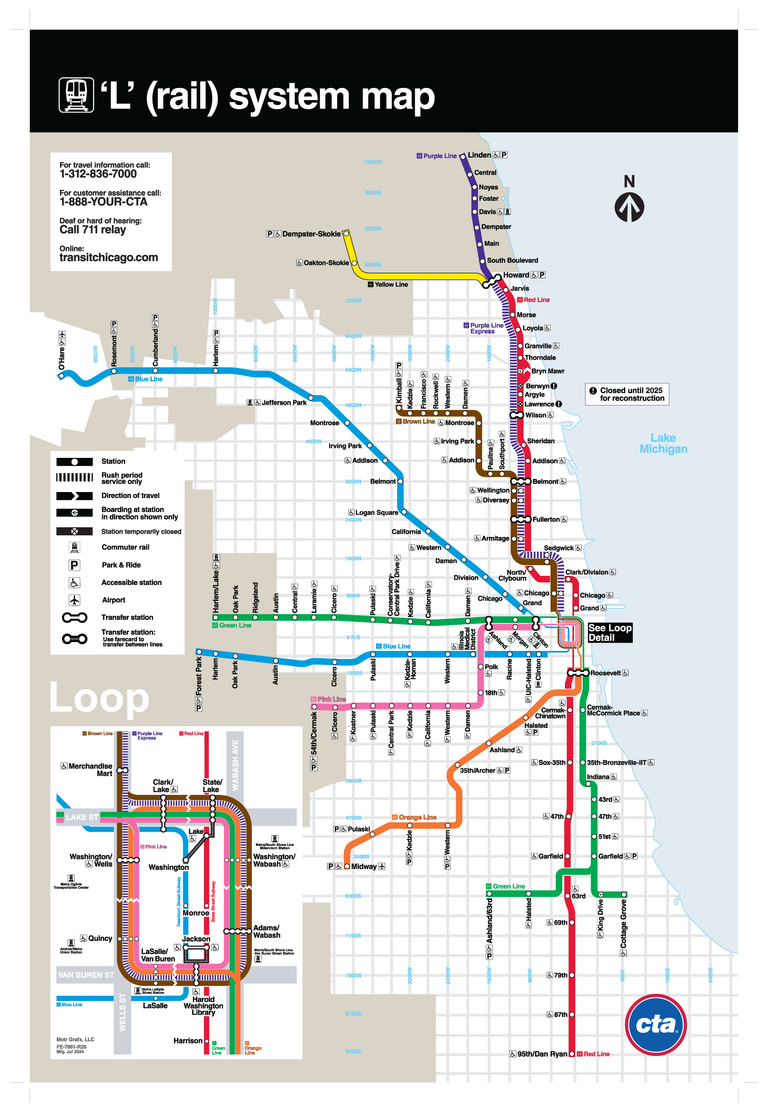
There are numerous Pace bus routes. To see those, you should check out the website:
https://www.transitchicago.com/
The cost for a ride is:
$5 'L' train fare from O'Hare or Midway
$2.50 Regular 'L' train fare or $2 Regular Bus fare (with up to 2 transfers within 2 hours)
$5 1-Day CTA/Pace Pass
TRAVEL TIP:That means you're probably better off using a 1-Day unlimited pass if you are traveling from O'Hare or Midway.
Metra Trains:
While the CTA trains cover most of the downtown region, there are Metra train lines that extend to the various suburbs:
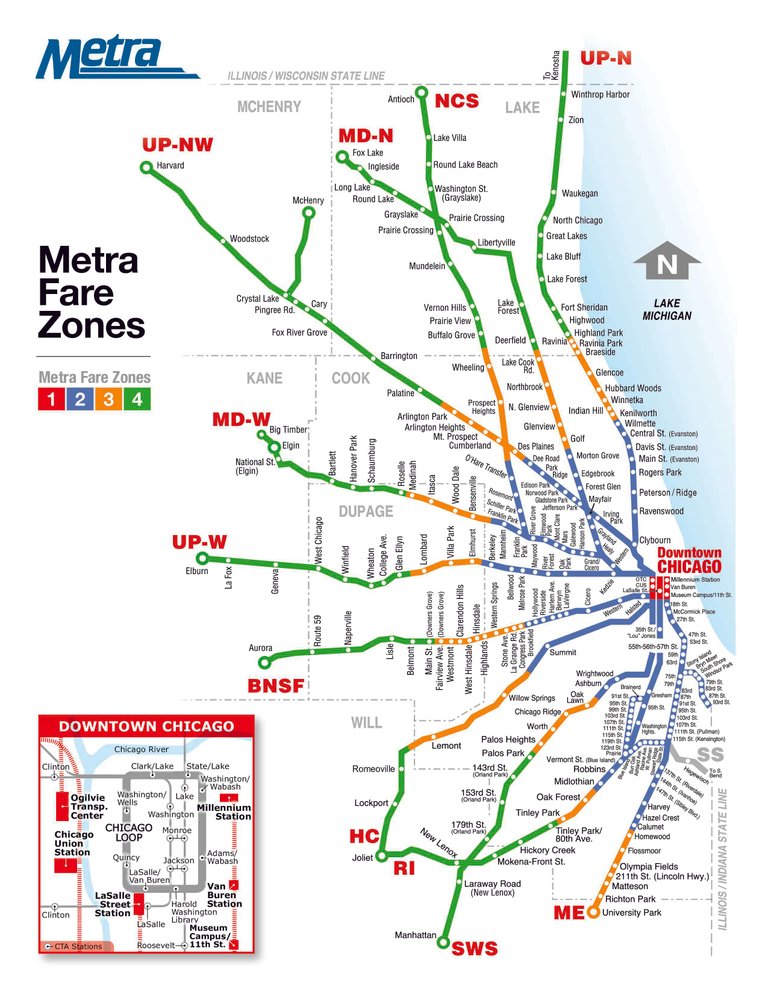
The cost varies depending on which zones you are traveling between.
If you are traveling between Zones 1 - 2, or between Zones 2 - 4 then it is $3.75 one way or $7.50 for a Day Pass.
If you are traveling between Zones 1 - 4 then it is $6.75 for a one way or $13.50 for a Day Pass.
Saturday / Sunday / Holiday Pass $7
Weekend Pass $10
However, there are very few express trains on the weekends so be prepared to make many stops.
CITYPASS
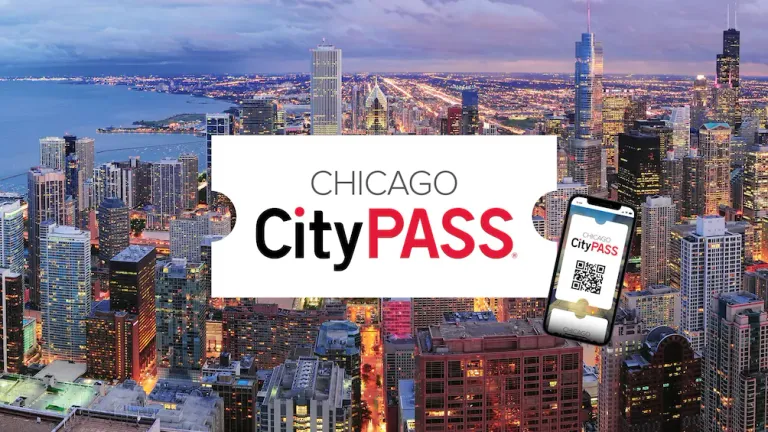
CityPASS is a company that bundles together discounted tickets for select tourist attractions. These are electronic tickets that are accessed through the CityPASS app or through e-mail. The tickets are valid for 9 consecutive days including the first day of use.
I have used CityPASS for both Atlanta and Chicago and was happy with both experiences. Note that I am not compensated in any way for promoting this.
As for whether or not it is worth it for you to use CityPASS, it really depends on what attractions you want to see and whether you are eligible for other discounts.
Many CityPASSes bundle together less worthwhile (IMHO) experiences. For example, the Atlanta CityPASS automatically includes the Georgia Aquarium, World of Coca-Cola, and Zoo Atlanta, which were fun. But then you have to choose 2 out of 3 options between the Fernbank Museum of Natural History, the College Football Hall of Fame, and the National Center for Civil and Human Rights. The museum was fine but I didn't like any of the remaining options. In the case of the Chicago CityPASS, the Skydeck Chicago is already included and that's something that I think is overpriced and can be skipped.
Another thing to consider is whether you are eligible for special discounts. At many Chicago attractions, you can get slightly discounted tickets if you are an Illinois resident and significantly discounted tickets if you are a Chicago resident. If you are a Chicago resident it's probably not worth it to get CityPASS. It could be a bargain for out-of-state residents and it's a "maybe" for Illinois residents who live outside of Chicago. Senior citizens, children, active military, students, and reciprocal organization members should do some investigation and calculations to determine if CityPASS will save them money.
CityPASS offers two different packages for Chicago, the Chicago C3 package and the full Chicago CityPASS package:
https://www.citypass.com/chicago-comparison
C3 lets you visit 3 of the following attractions:
Shedd Aquarium
Skydeck Chicago (Willis/Sears Tower)
Shoreline Sightseeing Architecture River Tour
Field Museum
360 CHICAGO Observation Deck (John Hancock Observatory)
Griffin Museum of Science and Industry
Art Institute of Chicago
Adler Planetarium
Centennial Ferris Wheel at Navy Pier
The full Chicago CityPASS automatically includes the Shedd Aquarium (great!) and the Skydeck Chicago (not so great!), and then you can choose to visit 3 other attractions from the above list (except that Centennial Ferris Wheel at Navy Pier is not an option for some reason).
The cost comparison for Adults (12+) is $102 vs $139 and for Children (3 - 11) is $76 vs $109.
In addition, the full Chicago CityPASS includes Premium Admission. That translates to expedited entry for Skydeck Chicago, 360 CHICAGO Observation Deck, and the Art Institute of Chicago. Or it gives you access to certain special exhibits (Field Museum) or shows/movies (Shedd Aquarium, Museum of Science and Industry, Adler Planetarium). Expedited entry is worth about $20 - $30 at the Skydeck Chicago. Normally at the Field Museum, access to all of the special exhibits would cost an additional $13, at the Shedd Aquarium you get two 4D experiences priced at a total of $9.90, at the Museum of Science and Industry you get one Giant Dome Theater film ($12) or motion ride ($8), and at Adler Planetarium you get two sky shows worth about $15 total.
I went with the full Chicago CityPASS and think that was a much better value than the cheaper C3 option.
MILLENNIUM PARK
Millennium Park is part of the larger Grant Park region. You can see the map of the area here:

Millennium Park is directly north of the Art Institute of Chicago and in fact there is a special Nichols Bridge that directly connects the park with the Modern Wing of the Art Institute. It is about a 25 minute walk from Millennium Park to either the Field Museum or Shedd Aquarium. Millennium Park includes the Bean (Cloud Gate), Crown Fountain, a pavilion, and some gardens.
Maggie Daley Park is east of Millennium Park (and thus northeast of the Art Institute) and is connected to Millennium Park by the BP Pedestrian Bridge. There are numerous child playgrounds here along with several areas for sports.
Butler Field is directly east of the Art Institute.
And south of the Art Institute are several other areas of Grant Park, including Buckingham Fountain.
During my recent visit to Chicago, I passed by the Cloud Gate Bean several times. However, all of the parts of Grant Park south of the Art Institute were closed due to Lollapalooza, an annual music festival.
All of the pictures below were taken by me. Here are a few photos of the Bean, taken on different days:
Cloud Gate (a.k.a. "The Bean" or "Chicago Bean"), 2006
Stainless steel
Dimensions: 66 feet long, 33 feet high, weighs 110 tons
Anish Kapoor
This sculpture was inspired by liquid mercury.
In a 2004 interview with the Chicago Tribune, Kapoor described his vision as: What I wanted to do was to make a work that would deal with the incredible skyline of Chicago and the open sky and the lake but then also be a kind of gate. You know, the tradition of public sculpture is for the gate, the archway, the square to flow within [the landscape] rather than be an object decorating it.
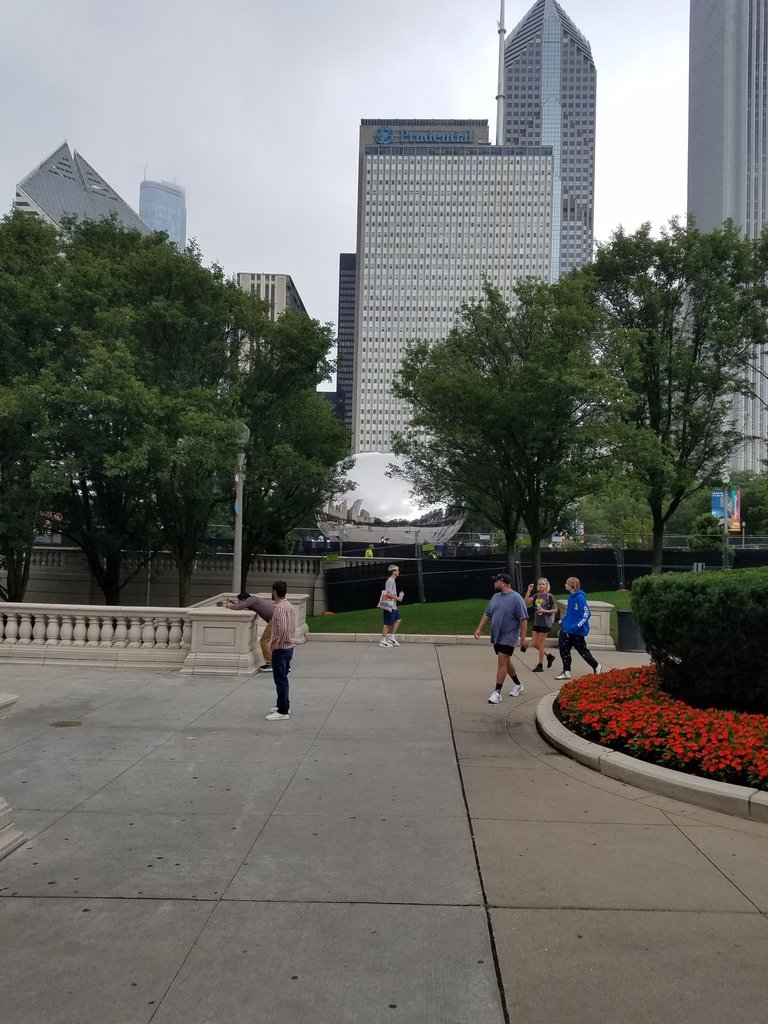
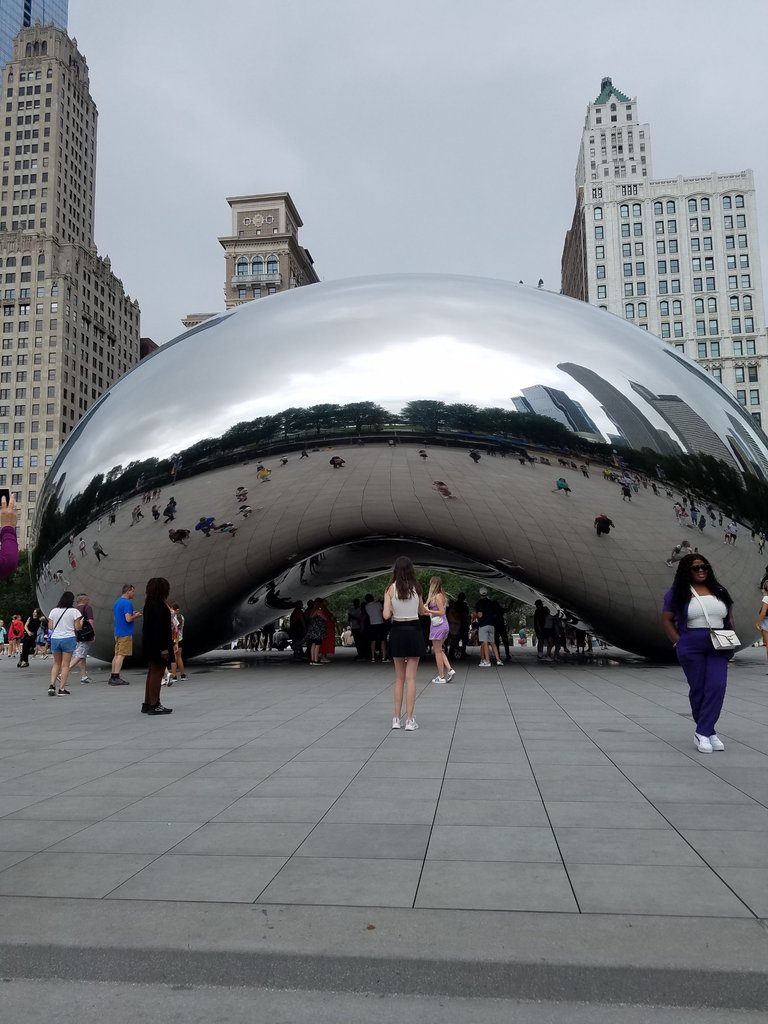
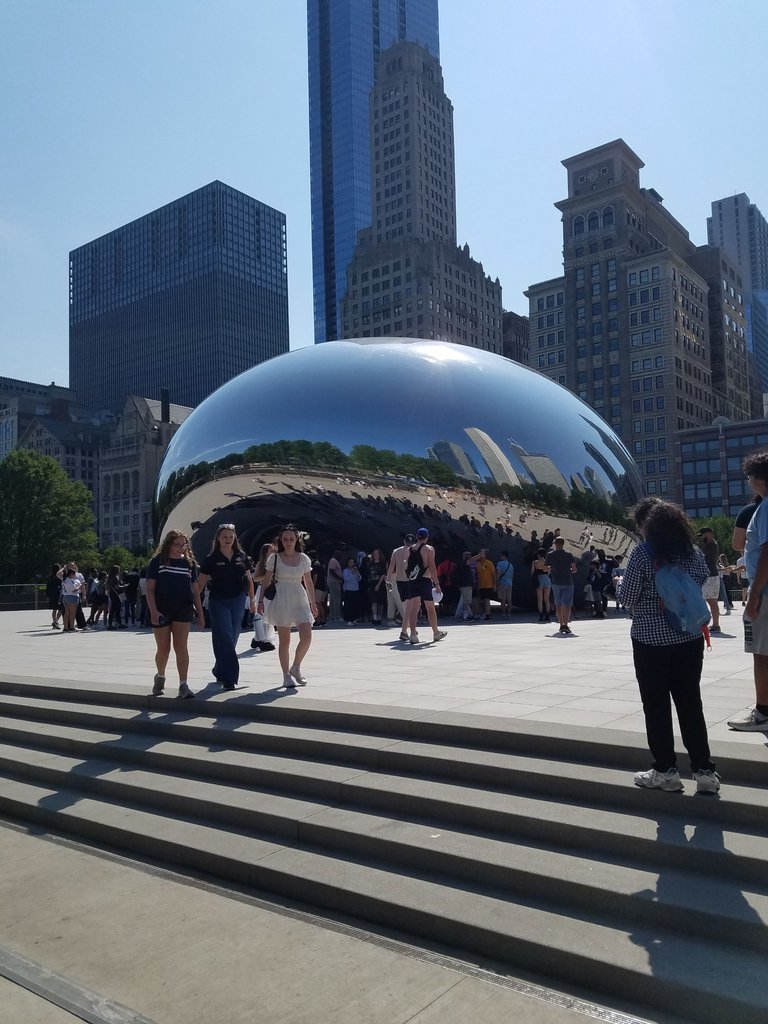
Crown Fountain, 2004
Glass, stainless steel, LED screens, light, wood, black granite and water
Dimensions: 2 towers of 16 meter high upon a water sheet of 70 x 14 meter in a total surface of 2.200 m^2
Jaume Plensa
This is an interactive sculpture that shows videos of local residents while periodically spouting water on to visitors. A description from the artist's website:
The ability to truly walk on water is also among the thrilling elements of the design. Plensa provides this opportunity through the very thin layer of water that covers the plaza area between and surrounding the towers. As in nature, in this fountain water falls down, but does not shoot up and the sound of water falling is magnetic. Furthering this sensation are images of nature interspersed among the faces of people. Even the benches that face each other from opposite sides of the fountain exist in order to further underline the concepts of communication and duality and their material, wood, helps to express the idea of the integral connection between nature and man through the subtlety of touch when people are seated.
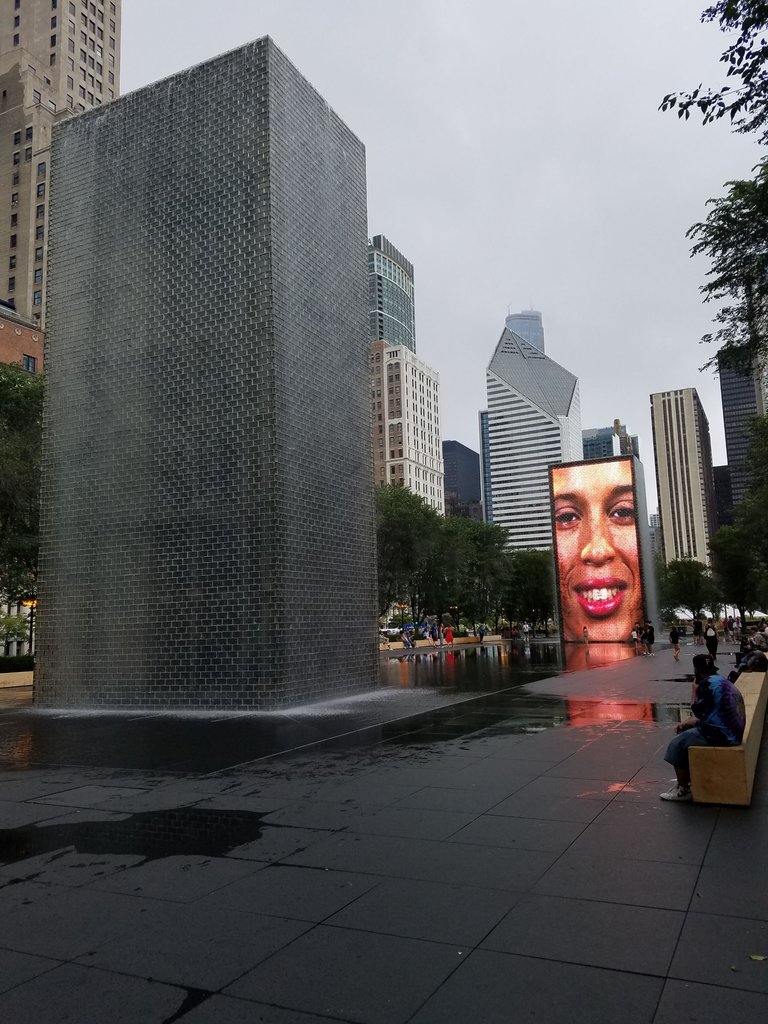
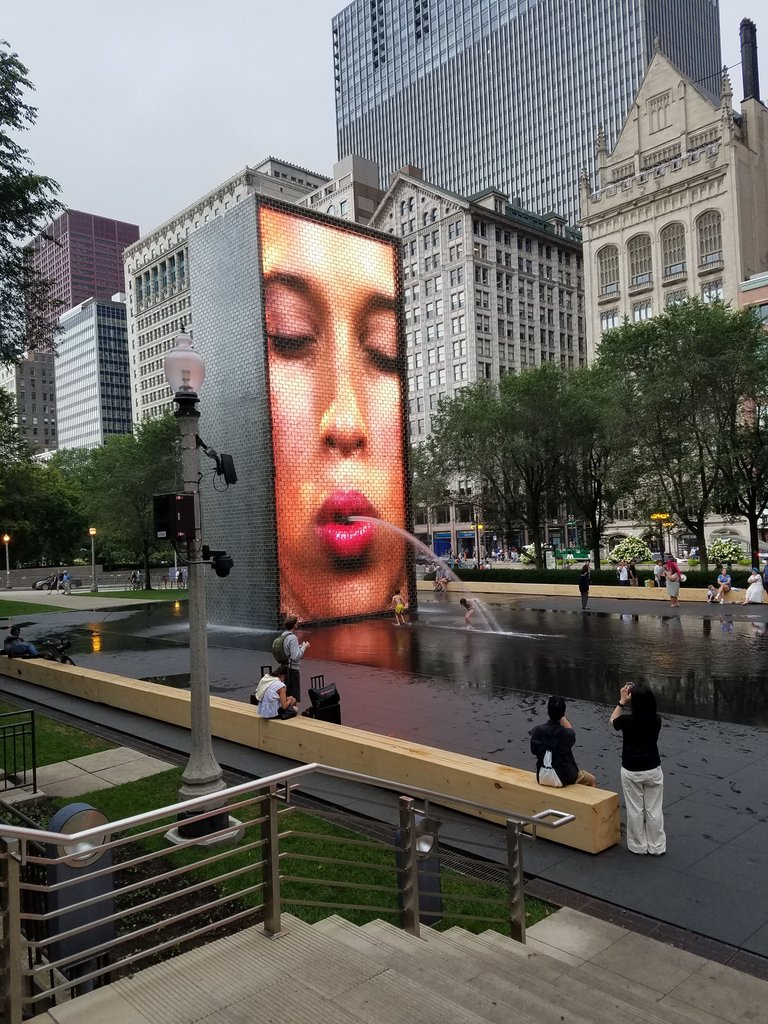
Here you can see the southern part of Grant Park cordoned off for Lollapalooza:
